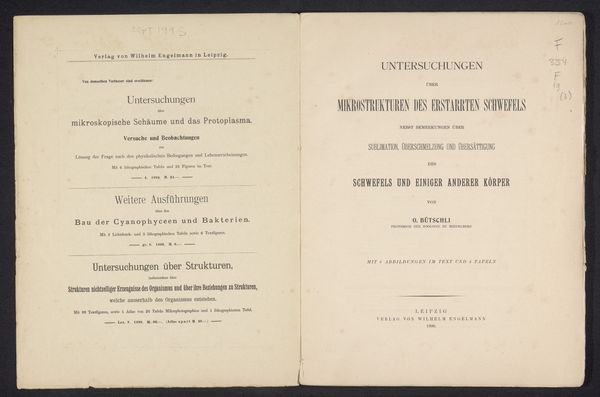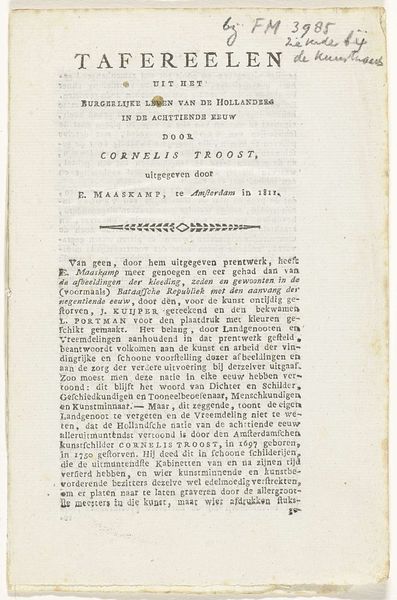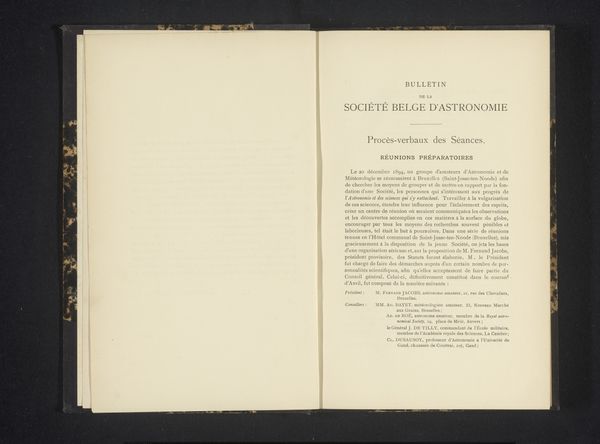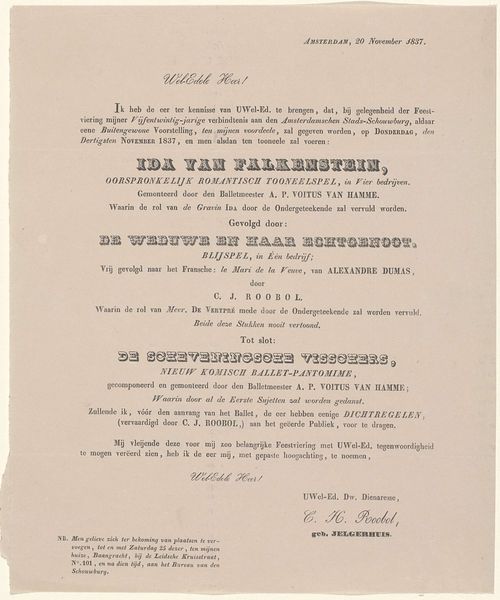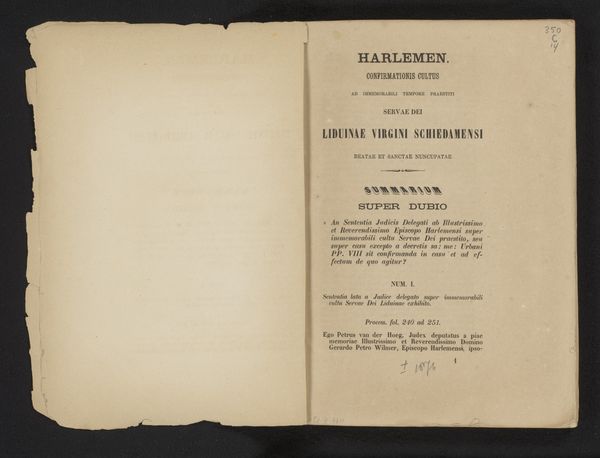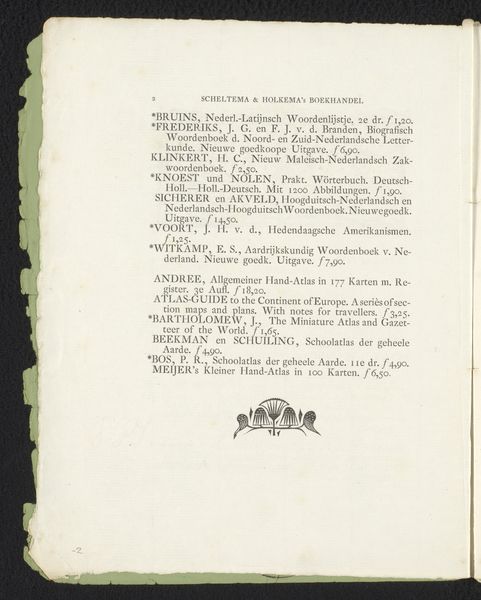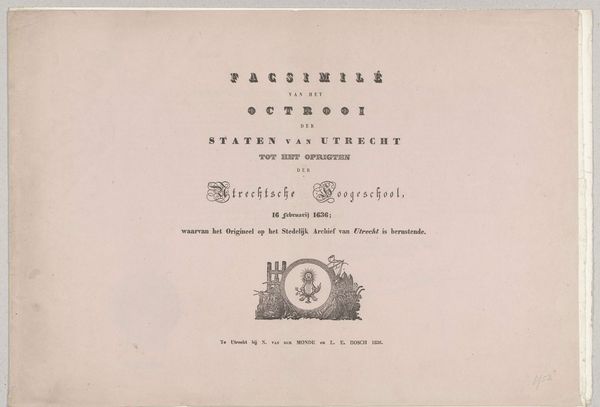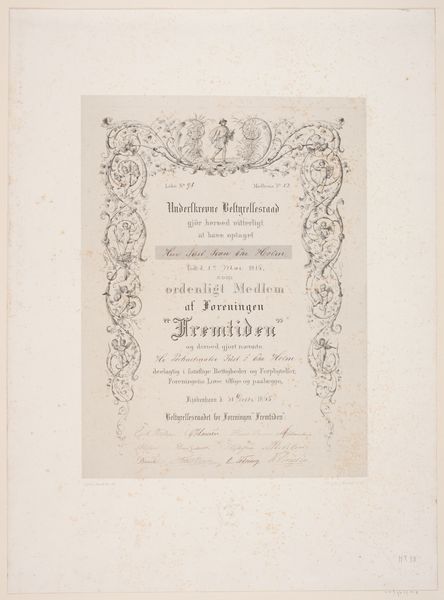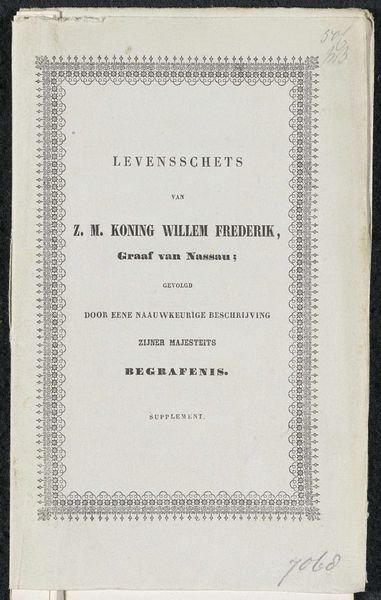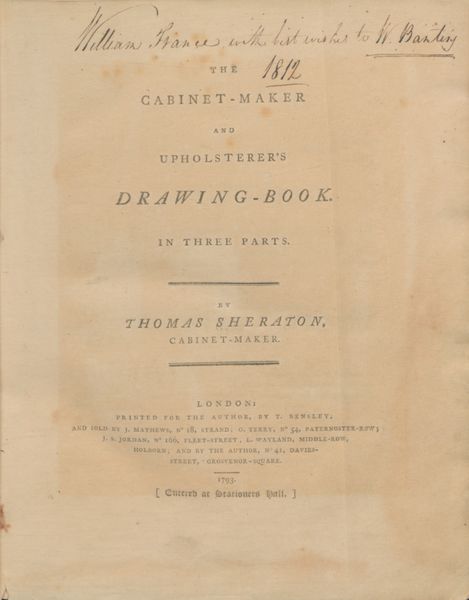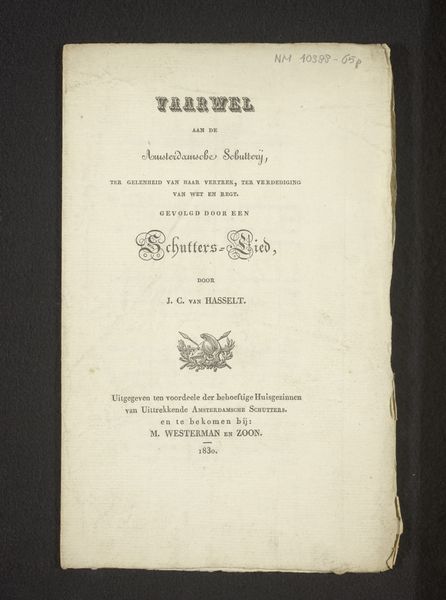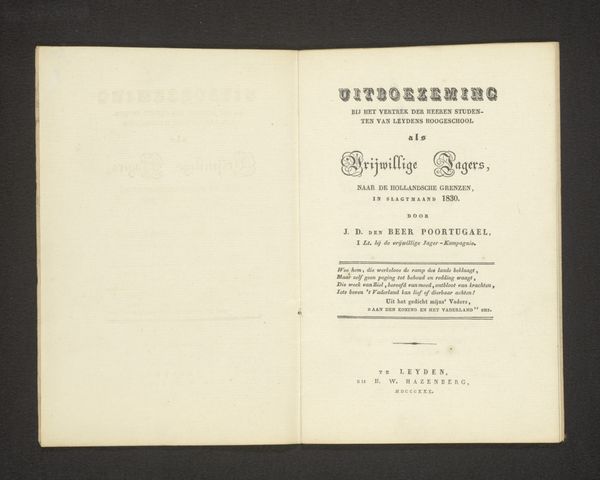
Uitnodiging tot het bijwonen van redevoeringen bij het tweede eeuwfeest van het Athenaeum Illustre te Amsterdam, 1832 1832
0:00
0:00
print, textile, paper, typography
#
dutch-golden-age
# print
#
textile
#
paper
#
typography
Dimensions: height 365 mm, width 225 mm
Copyright: Rijks Museum: Open Domain
Curator: This print, created in 1832 by Stadsdrukkerij, served as an invitation to commemorate the bicentennial of the Athenaeum Illustre in Amsterdam. Note the carefully chosen typeface; the material's clear relationship with the then contemporary printing processes. Editor: It's quite stark, isn't it? Almost severe. Very formal, very official. One can picture the city council approving the wording... did many common folk even see these or would the intended audience be only those who could read and speak formally? Curator: The materiality is definitely significant here. It's typography at its core, printed on paper, acting as a vessel for information, specifically inviting the intelligentsia to attend the speeches delivered in Latin and Dutch. We see the production of knowledge intersecting with civic celebration and also urban printing practices. The very act of printing made it a public notice in a specific way that invited public consumption. Editor: Precisely. The Athenaeum was meant to be a symbol of progress and enlightenment. What narratives were being left out by this gesture? And whose "letters, arts, and sciences" were considered 'fair'? Curator: A valuable perspective! This wasn't just a piece of information design, it’s also a carefully considered work made using very specific materials to a select portion of society. There is paper and ink and time – physical expenditure and labor – all funneling into producing a sense of communal importance to the city's intellectual landscape. What typefaces were selected? And by whom? Those are important details that tell a story about craft and design of the period. Editor: Right. And framing the "city's intellectual landscape" within existing power dynamics becomes so apparent in even this simple printed invitation. It forces us to question who was actively included—and, just as importantly, excluded—from shaping Amsterdam's intellectual identity at that time. Curator: It makes me consider all the invisible labor behind something so seemingly straightforward... all those processes needed to transfer thoughts and ideas onto this inviting yet, as you suggest, rather stark paper. Editor: Exactly! Let's carry those questions of labor and access forward as we continue through our exhibition.
Comments
No comments
Be the first to comment and join the conversation on the ultimate creative platform.
